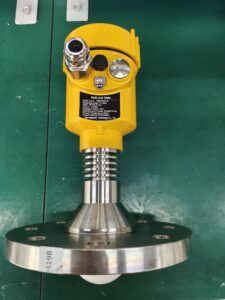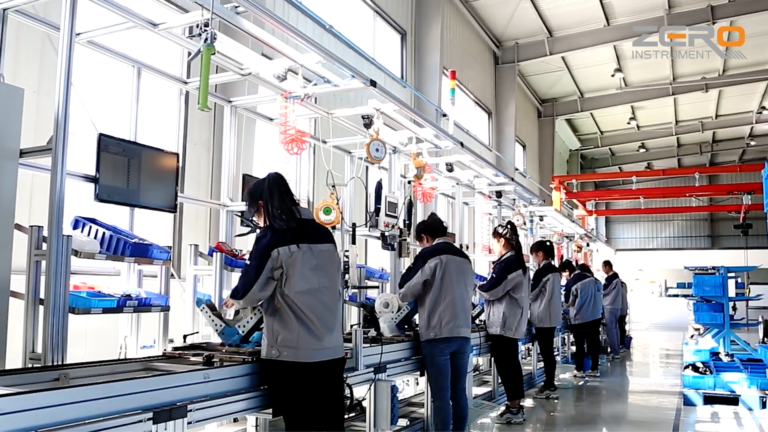Radar level meters are widely used in level measurement of storage tanks, reactors and other containers due to their high accuracy and reliability.
Among them, pulse radar level meters and frequency modulated continuous wave (FMCW) radar level meters are two common types.
Although they both use radar waves for measurement, their working principles and applications are different. This article will detail how to quickly differentiate between these two types of radar level meters.

First, let’s make a distinction based on working principles. The pulse radar level meter emits a series of short microwave pulses. These pulses are reflected when they encounter the surface of the measured medium, and the reflected signals are captured by the receiver.
By calculating the time difference between the transmitted and received pulses, the distance of the level gauge from the medium surface can be determined. This type of radar level meter is suitable for environments with a lot of dust or large changes in the medium.
In contrast, FMCW radar level meters are in the form of continuous waves, whose frequency changes in a certain pattern over time. When the beam encounters the surface of the medium and is reflected back, the frequency of the reflected wave will be slightly different from that of the transmitted wave due to the time difference. By analyzing this frequency difference, the round-trip time of the beam can be accurately calculated, and then the distance information can be obtained.
FMCW radar level meter is characterized by high measurement accuracy and can achieve smaller measurement intervals. It is suitable for situations where liquid surface fluctuations are small or high-precision measurement is required.

Secondly, observing the characteristics of the output signal is also a way to distinguish. The output signal of a pulse radar level meter usually presents an obvious pulse shape, while the output signal of an FMCW radar level meter is a continuous waveform whose frequency changes periodically with time.
Furthermore, it can be distinguished by the complexity of installation and maintenance. The structure of the pulse radar level meter is relatively simple and easy to install and maintain, while the FMCW radar level meter requires more detailed debugging and maintenance to ensure measurement accuracy. In addition, it is also important to consider environmental adaptability.
In environments with high temperature, high pressure, or interference from steam, dust, etc., the performance of the pulse radar level meter may be more stable. In situations where extremely high accuracy is required or medium surface fluctuations are small, FMCW radar level meters have more advantages.
Finally, it can be judged by the technical parameters and application scenario descriptions provided by the manufacturer. Professional radar level meter manufacturers usually describe the applicable scope and technical features of their products in detail. By comparing this information, different types of radar level meters can be identified more quickly.

In summary, by analyzing the working principle, output signal characteristics, installation and maintenance complexity, environmental adaptability, and technical information provided by the manufacturer, we can quickly distinguish between pulse radar level meters and frequency modulated continuous wave radar level meters.
Understanding these differences helps us select the most appropriate type of radar level meter based on specific measurement needs and environmental conditions to ensure measurement accuracy and efficiency.
